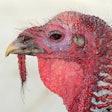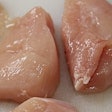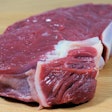In my years as a commercial nutritionist, I had made it a habit to review all my product formulas twice a year. Now that I work for myself, and I produce my own piglet feeds, I kept this routine and I use the slow time of December (and again in June) to review my formulas. I also advise my own consulting clients to do the same.
Of course, when one has a handful of products (formulas) to review, this is an easy enough task, but when the list counts hundreds of formulas, then it can be a daunting task. I recall, for one of my clients, the list amounted to over 800 unique formulas. Of course, some of them had never been reviewed once since their inception!
When it is time to review formulations, the list below helps me to achieve the most out of limited time available:
1. Review first the high-volume products to increase return-on-investment (time). Assign to an assistant (or trainee) to review second-tier formulas and bring to your attention any problems found.
2. A review should not be a complete reformulation of a product. It rather offers the opportunity to (a) ensure no errors escaped your initial check, and (b) to check if the current cost is in line with expectations
3. During a routine review, it is a good time to reevaluate additives that were introduced to (a) meet sporadic market demands, such as a new flavor in the market, or (b) a problem associated with feed manufacturing, such as an anti-mycotoxin agent introduced when a high-mycotoxin batch of cereals was bought.
4. Throughout the year, nutritionists accumulate new knowledge from their own trials (at customer or own facilities), research reports, and, of course, market intelligence. Some of that knowledge can and should be transferred into existing products during routine formulation reviews.
Keeping your formulas current ensures that you use the most recent technology whilst cost is kept at minimum. It is the same whether you are a large nutrition supplier, a local feed mill or an animal producer mixing your own feeds.


















